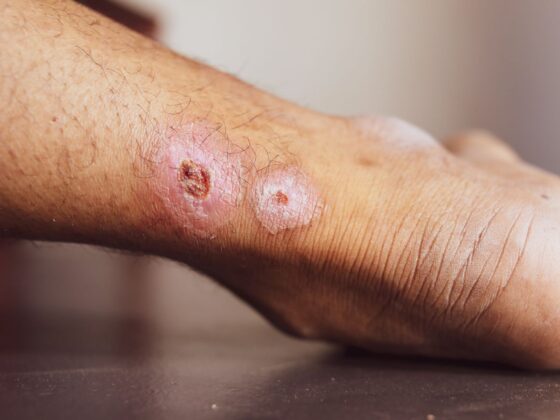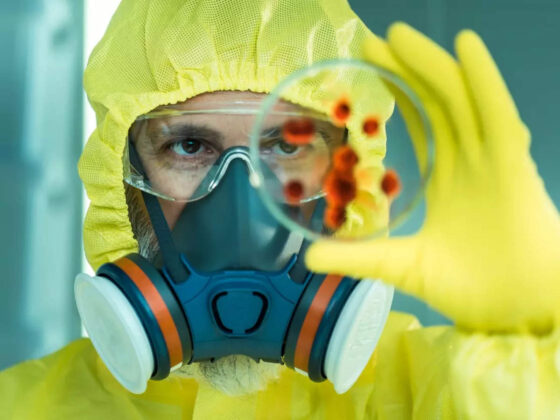Healthwire Bureau
New Delhi, January 27-The SARS-like novel Coronavirus or 2019-nCoV, which has claimed nine lives by now and infected hundreds of people across the world, has caused havoc in China, the country of its origin, which is taking stricter and more targeted measures to curb the spread.
The deadly, which is believed to have originated from a fish market in the central city of Wuhan and be spread by human-to-human contact, has forced China to lockdown its own citizens barring them from travelling to contain the virus. In order to tell the world how ready the country is to fight the menace of the virus, China is also making a 1000 bed hospital which it claims to complete in a staggering 10 days, that is 8 days from today.
Healthwire brings to its readers a basic know-how guide to novel Coronavirus (n-CoV)
What is Coronavirus?
According to scientists, Coronavirus comes with its seven different variations, that can infect people and make them sick, according to the US Centers for Disease Control and Prevention (CDC). In rare cases, they are zoonotic, meaning they can be transmitted from animals to humans.
What is problematic here, is that the current outbreak is caused by a virus which is different from those previously identified, according to Chinese scientists.
What do we know till now since inception of the outbreak
– The previously unknown strain is believed to have emerged late last year from illegally traded wildlife at an animal market in Wuhan.
– Thailand has five cases, Singapore and Taiwan three, Japan, Vietnam and South Korea with two apiece, and Nepal and the United States one each.
– In India, meanwhile, on January 24, the Ministry of Health said that there are three suspected cases of the virus in India. While two are from Mumbai, one is reported from Hyderabad, and they are under observation, news agency ANI has reported.
– Meanwhile, India’s neighbour Nepal also confirmed a case of the deadly virus, identifying the infected person as a Nepali student who recently returned from the Chinese city of Wuhan, local media reports said.
– The WHO said that while the outbreak was an emergency for China, it was not yet a global health emergency.
– China says the virus is mutating and can be transmitted through human contact.
– Those most affected are older people and those with underlying health conditions.
– Three research teams are to start work on developing potential vaccines, the Coalition for Epidemic Preparedness Innovations said. The plan is to have at least one potential vaccine in clinical trials by June.
– Preliminary research suggests the virus was passed to humans from snakes, but Chinese government medical adviser Zhong Nanshan has also identified badgers and rats as possible sources.
The Origin of the Outbreak
Coronavirus outbreak has been linked to a large seafood and animal market in China’s Wuhan, suggesting a possible zoonotic origin to the outbreak.
What is more is that the fact that people, especially from China or travelling to China, can contract the new virus without visiting Wuhan.
“Currently, it can be said it is affirmative that there is the phenomenon of human-to-human transmission,” said Zhong Nanshan, renowned scientist with National Health Commission said in an interview with CCTV. He further explained that in Guangdong, two patients were infected by family members who visited Wuhan.
Nature of the Virus
As millions of Chinese travel for the Lunar New Year holiday in humanity’s biggest migration, a Chinese government expert has said that the virus was contagious between humans, fuelling major outbreak fears.
The countries have gone on alert in the backdrop of Chinese travelling for Lunar New Year. Authorities in Thailand and in Japan have already identified at least three cases, all involving recent travel from China. South Korea reported its first case on January 20, when a 35-year-old Chinese woman from Wuhan tested positive for the new coronavirus one day after arriving at Seoul’s Incheon airport. The virus has claimed nine lives so far in China.
Symptoms
Initial symptoms of the novel (new) coronavirus include fever, cough, tightness of the chest and shortness of breath. For those with a weakened immune system, the elderly and the very young, there’s a chance the virus could cause a lower, and much more serious, respiratory tract illness like pneumonia or bronchitis, says CDC.
Coronavirus treatment
There are currently no vaccines available to protect one against human coronavirus infection or treatments for illnesses caused by it, says CDC.
Most people with common human coronavirus illness will recover on their own.
Taking doctor’s prescribed medication for pain and fever, drinking plenty of fluids, getting rest and sleep as much as possible, will help to relieve the symptoms, experts say at CDCP.
Precautions
According to AIIMS Director Randeep Guleria, people should maintain good standards of hand hygiene, avoid travelling in crowded places and use masks. Any person having slight symptoms of cough, fever and weakness should immediately report to the nearest health facility.











